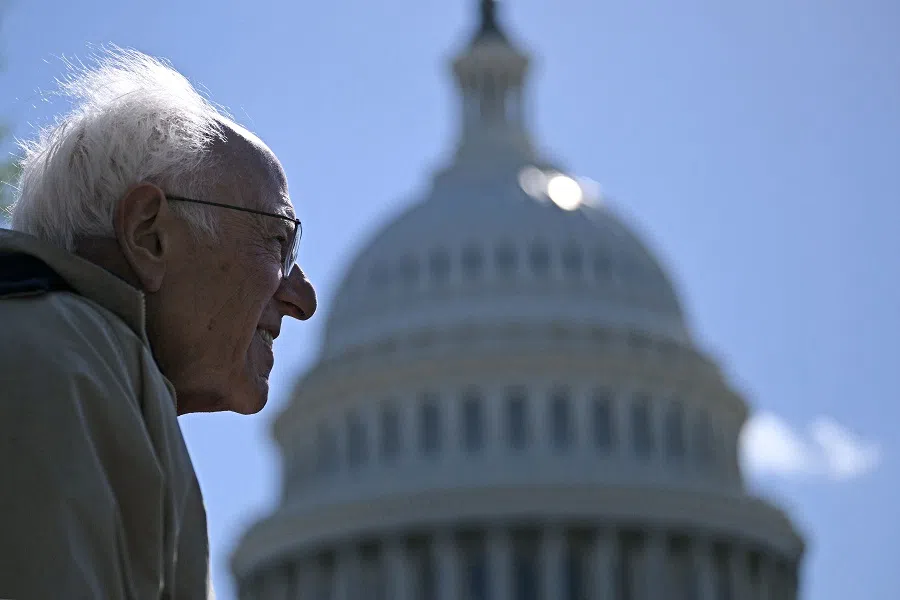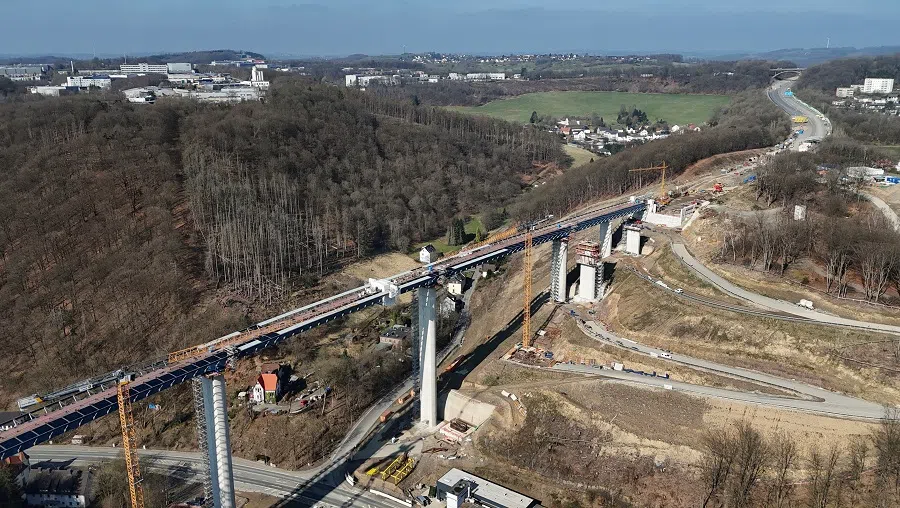Band-Aids on a broken system: The futility of Trump’s economic measures
Limited by systemic constraints, Trump’s short-term economic policies expose fundamental flaws in the American political and economic system, revealing its inability to address deep-seated structural problems, says former journalist Goh Choon Kang.

US President Donald Trump believes that imposing tariffs on other countries can solve many of the current problems facing the US, but many experts and academics disagree. It is true that a major power can sometimes improve its trade deficit by using tariffs to pressure weaker nations into lowering or removing barriers on American imports. However, tariffs cannot fix deeper structural issues that the US faces, such as the hollowing out of American manufacturing. Tariffs may also prove ineffective against strong rivals, such as China.
Trump has few options
However, Trump’s aggressive use of tariffs and deep cuts to federal government spending show his urgent need to achieve certain goals — including reducing the massive national debt and fiscal deficit, increasing tax revenue, and revitalising manufacturing. The US national debt stands at US$36 trillion, and annual interest payments alone have hit US$1 trillion — more than its defence spending. Trump also aims to use tariffs to pressure China, his greatest rival. But China is no longer the weak player it once was. Not only is it willing to say no, it can also retaliate tit-for-tat and has made it clear that it will “fight to the end”.
The US blames many of its problems on China, but in reality, it cannot address the root causes. Several prominent American economists and business leaders — including Joseph Stiglitz, Paul Krugman, Jeffrey Sachs, and Ray Dalio — believe that Trump’s approach is misguided and could ultimately backfire. Still, aside from these short-term measures, Trump has few other options. This is because America’s economic problems are structural in nature, and it is unlikely that any structural reforms can be carried out within a four-year term.
If the Republicans lose control of either the House of Representatives or the Senate — or both — in the midterms, Trump would face significant resistance from the Democrats and potentially risk becoming a lame-duck president.
Limited impact
After many years, American political and economic systems are starting to show their weaknesses and flaws. Politically, the two-party system has unfortunately fallen into an unprecedented crisis. The Republican and Democratic parties are at bitter odds with no room for compromise, leading to deep social divisions. Each president serves a maximum of eight years — a short timeframe that makes it nearly impossible to resolve deep-seated issues, especially when combined with constraints from Congress and the courts.

Trump has already served one term and can no longer seek another term. Achieving anything substantial in just four years is highly unlikely, especially with the crucial midterm elections approaching. If the Republicans lose control of either the House of Representatives or the Senate — or both — in the midterms, Trump would face significant resistance from the Democrats and potentially risk becoming a lame-duck president. And if a Democrat returns to the White House in four years, they may well exact payback and reverse Trump’s policies entirely.
Root problems not addressed
Since taking office earlier this year, Trump’s main strategy has been to “flood the zone” — bombarding the public sphere with a deluge of information to overwhelm and distract, creating the illusion of success. For example, he has been signing executive orders almost daily, bypassing Congress and the courts. He has cut federal jobs via Elon Musk’s Department of Government Efficiency (DOGE), announced investments by companies setting up manufacturing in the US, deported some undocumented immigrants, and so on.
In short, there has been a lot of action, but one wonders how much real impact it has had. On the other hand, negative reactions and growing public dissatisfaction are increasingly evident, with polls showing a decline in his approval ratings.
The only consensus between the Republicans and Democrats is that China should be blamed. This serves the interests of both parties, providing a convenient way to divert public attention from domestic issues. However, this approach does little to address America’s economic ailments.
After decades, the US market has become heavily reliant on a wide range of affordable and high-quality goods from China, including daily necessities. As the saying goes, “the wool comes from the sheep’s back” — a sharp increase in tariffs means businesses will inevitably pass on the cost to consumers. Cutting off the supply chain completely is even less feasible.
American party politics does not allow the ruling party or president to have long-term plans, so they can only resort to short-term fixes like tariff hikes. Add to this the frequent changes in administration, and policy continuity becomes difficult.

Trump and his team may be well aware of the structural problems facing the US — such as the decline of its manufacturing sector, an economy heavily driven by services, and high financialisation — along with the mounting pressure to service national debt. Yet they clearly lack effective solutions.
The hollowing out of manufacturing, for instance, is the result of decades of capital chasing profit maximisation, which led to the overseas relocation of manufacturing. It is impossible to expect them to move back to the US overnight, especially since the conditions that once allowed America to be a leader in manufacturing no longer exist.
It takes long-term plans and a lot of time to address structural issues — there is no shortcut. But American party politics does not allow the ruling party or president to have long-term plans, so they can only resort to short-term fixes like tariff hikes. Add to this the frequent changes in administration, and policy continuity becomes difficult.
Flaws of the American political system
This is a major weakness of the design of the US political system, and one that is difficult to change. But this internal issue inevitably harms America’s international credibility. In contrast, the Chinese government has far greater room to manoeuvre. It faces no electoral pressure, no opposition party obstruction, and is able to formulate and implement long-term strategies — biding its time and staying calm while preparing for a protracted rivalry.
One consequence of America’s short-term political manoeuvring is that policies often change with each presidential transition, leaving little continuity for projects that require sustained planning and investment, such as infrastructure development. Such costly projects are often seen as less important, which results in the decay of infrastructure.
The US has no state-owned enterprises; its economy is driven by oligarchs. But things are very different in China.

Even Germany, long seen as a star among Western industrial powers, is no exception. According to Deutsche Welle, Germany’s infrastructure has been neglected for decades, with around 5,000 bridges nationwide in urgent need of repair. Its chronically overloaded and delayed railway system has launched the largest overhaul in its history — over 4,000 kilometres of track across 40 key routes will be upgraded in the coming years.
Deutsche Bahn has estimated that by 2034, infrastructure upgrades alone will cost 290 billion euros (US$329.3 billion). Germany’s Federal Ministry of Transport has also calculated that simply maintaining the federal highway system will require another 140 billion euros. Combined, these two expenses will almost exhaust the 500 billion euro infrastructure budget for the next 12 years. Can this predicament really be unrelated to the fragmentation of Germany’s political system?
Beyond political flaws, the deep-rooted problems of American capitalism continue to erode national strength and increasingly appear to be incurable. Americans revere economic liberalism and laissez-faire markets, favouring minimal government intervention. Even the Federal Reserve is not controlled by the president, reflecting the prevailing belief that the smaller the government, the better. During the Reagan era, there was a famous saying: “Government is not the solution to our problem; government is the problem.” Now, Trump thinks the same way too.
Flaws of American economic principles
Laissez-faire capitalism essentially follows the law of the jungle, where big fish eat little fish and little fish eat shrimp, ultimately leaving only powerful conglomerates and multinational corporations capable of dominating the market. Wealth ends up increasingly concentrated in the hands of a few individuals. As US senator Bernie Sanders pointed out, the three richest Americans — Elon Musk, Jeff Bezos, and Mark Zuckerberg — collectively hold more wealth than the bottom 170 million Americans combined. This is oligarchy. The US has no state-owned enterprises; its economy is driven by oligarchs. But things are very different in China.
In contrast, China’s centralised government is far more effective in getting things done. For this reason, if the two countries were to enter a prolonged war of attrition, it would be disadvantageous for the US.

America’s ultra-wealthy, including the financial titans of Wall Street, wield influence not only over the economy but also over politics, as they are indispensable patrons of political figures. With these entrenched interest groups deeply interwoven into the system, implementing any meaningful economic reform is next to impossible. This is the so-called “deep state”, which makes Trump’s pledge to “drain the swamp” in Washington easier said than done.
This is why gun control remains elusive, healthcare reform has repeatedly failed, medical insurance continues to become more expensive, drug abuse is rampant, the gap between rich and poor keeps widening, and why life expectancy is steadily declining. In contrast, China’s centralised government is far more effective in getting things done. For this reason, if the two countries were to enter a prolonged war of attrition, it would be disadvantageous for the US.
Singapore a rare exception
Apart from the US and Germany, most countries that practice party-based politics struggle with the inherent flaws of their political and economic systems. Singapore is one of the rare exceptions. The country’s economic miracle owes much to the pivotal role played by the government. Its political and economic structure allows the state to exert a high degree of control — for instance, through a network of so-called “Temasek-linked companies”, which have played a crucial role in driving national economic development.
Government stability has enabled Singapore to carry out long-term planning and investments, such as public housing and home ownership schemes, expanding ports and airports, and developing the MRT network. It also ensures policy continuity and predictability. Nevertheless, Singapore’s case is largely a historical anomaly and should be considered an exception.
This article was first published in Lianhe Zaobao as “从关税战看制度优缺点”.





